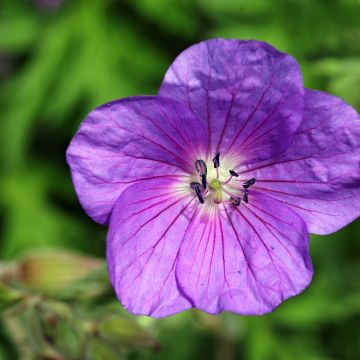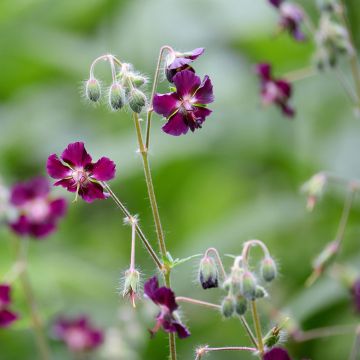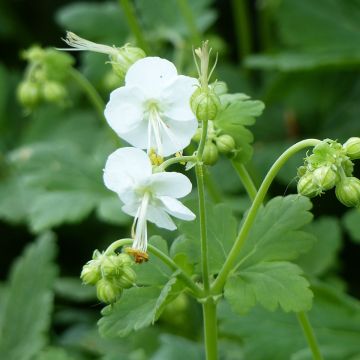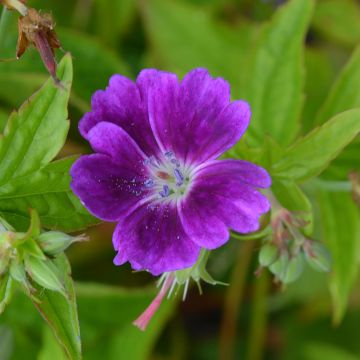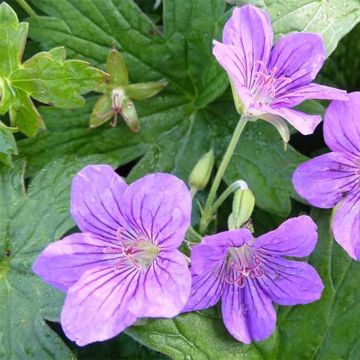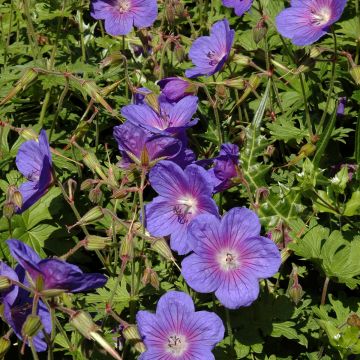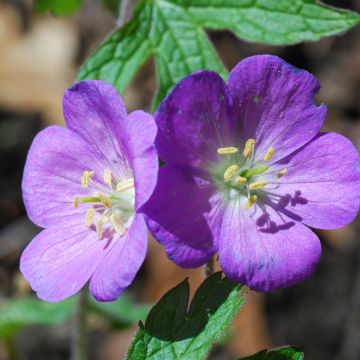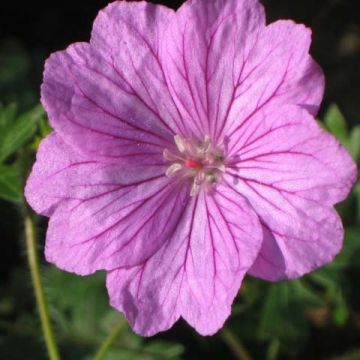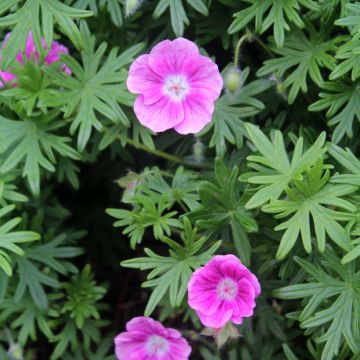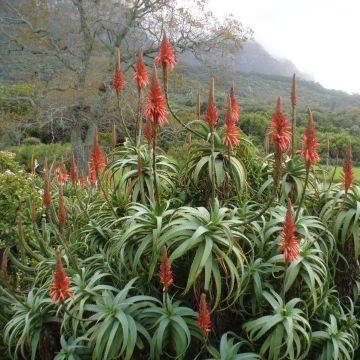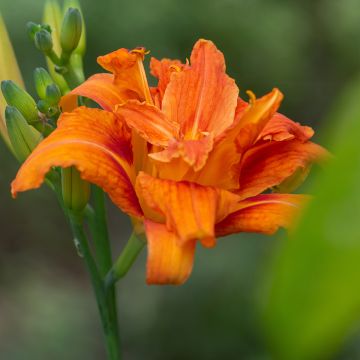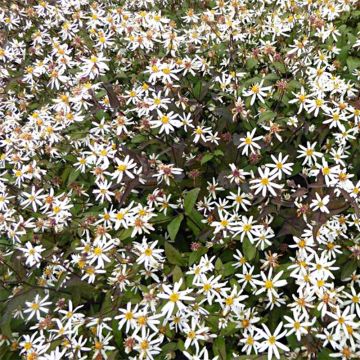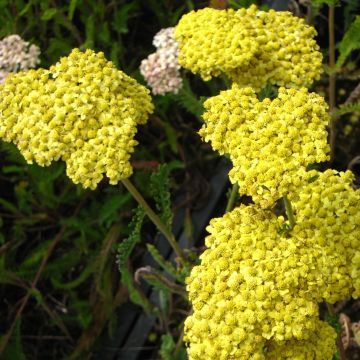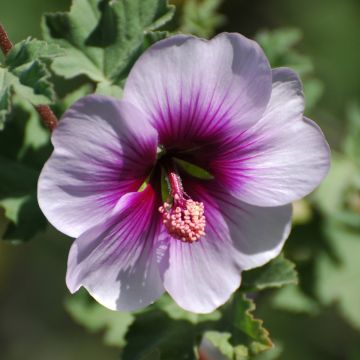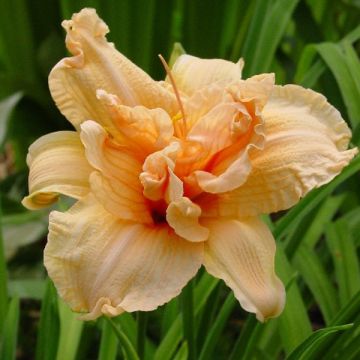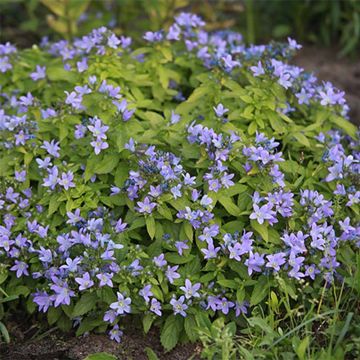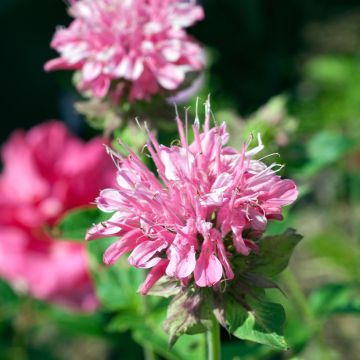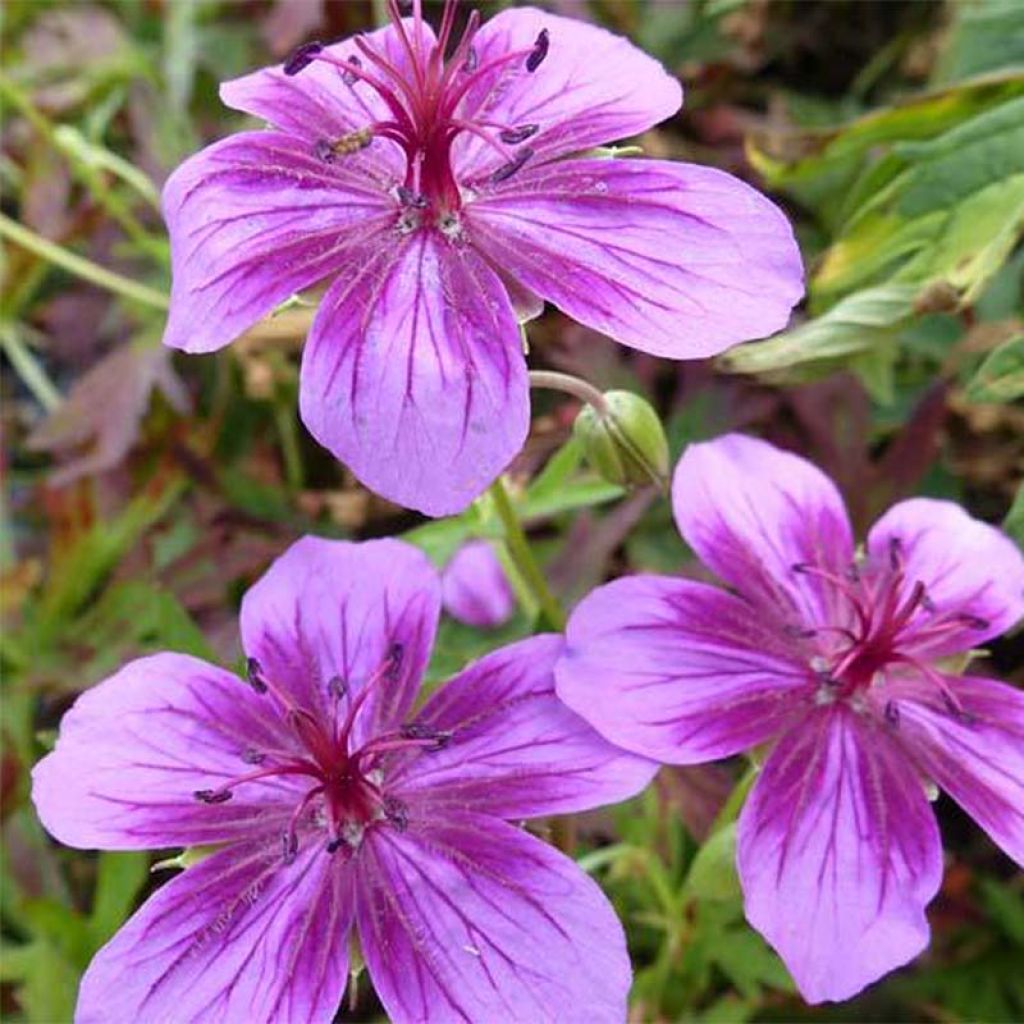

Geranium soboliferum Starman
Geranium soboliferum Starman
Geranium soboliferum Starman®
Cranesbill, Hardy Geranium
For my part, I will wait and see because the pot I received was devoid of foliage, only the weeds (leafy herb and common weed) were leafy.
DENOYELLE, 22/05/2020
This item cannot be shipped to the selected country
Delivery charge from €5.90
More information
Schedule delivery date,
and select date in basket
This plant carries a 12 months recovery warranty
More information
We guarantee the quality of our plants for a full growing cycle, and will replace at our expense any plant that fails to recover under normal climatic and planting conditions.
From €5.90 for pickup delivery and €6.90 for home delivery
Express home delivery from €8.90.
Does this plant fit my garden?
Set up your Plantfit profile →
Description
The Perennial Geranium 'Starman', derived from Geranium soboliferum, is undoubtedly one of the most variegated. It stands out with its bicolour summer flowering; each single flower displays a fresh pink colour variegated with magenta purple in the centre and veined in the same tone. Its intensely dissected and changing foliage adorns a low and spreading vegetation, allowing ground cover use. It is an original, very colourful plant, but delicate to grow that is suitable for sunny flowerbeds and grows in ordinary soil, moist to wet but well-drained. This variety is particularly well-adapted to subalpine gardens.
Geranium soboliferum, or Cranesbill with runners, is a perennial species with creeping stems native to East Asia, Eastern Russia including Siberia, and the cold province of the Amur River. It is also found in Korea and Japan, on the island of Honshu. Little known but extremely hardy and very floriferous, it has given rise to the 'Starman' variety, a remarkable recent cultivar with bright flowers.
'Starman' forms a compact and spreading clump that can reach 25 to 35 cm (10 to 14in) in height when in flower, spreading thanks to creeping stems bearing 'runners'*, over a diameter of 50 to 60 cm (20 to 24in). Its growth is often slow in ordinary soil. Its flowering begins at the end of June, reaches its peak in July-August in moist soil, and continues more sporadically until September-October. The flowers are quite large compared to the size of the plant, in well-opened cups, composed of 5 slightly villous petals, overall with a very bright bicolour pink appearance. The foliage, particularly dissected into narrow palmate lobes, emerges golden in spring, gradually becomes a vivid green in summer, then takes on bronze to purple hues in autumn.
* Runners are fleshy tuberous parts present on creeping stems, which have the ability to regenerate a seedling. They are somewhat plant embryos.
Like many other perennial geranium species, Geranium 'Starman' is a superb plant, providing nectar and pollen for many insects such as butterflies, bees, bumblebees, etc. But it has an extraordinary floribundity in moist soil. This variety is ideal for a herb garden, a rose grove, along a path or at the base of a not too demanding flowering bush, which will allow it to climb a little. 'Starman' will bring a very colourful note to shade perennial beds such as lamiums or epimediums, regardless of its exposure, even if it is slightly less showy, it flowers very well even in light shade. It will prove to be a good companion for columbines, peonies, lupins, bellflowers, poppies, and other large daisies.
Report an error about the product description
Geranium soboliferum Starman in pictures
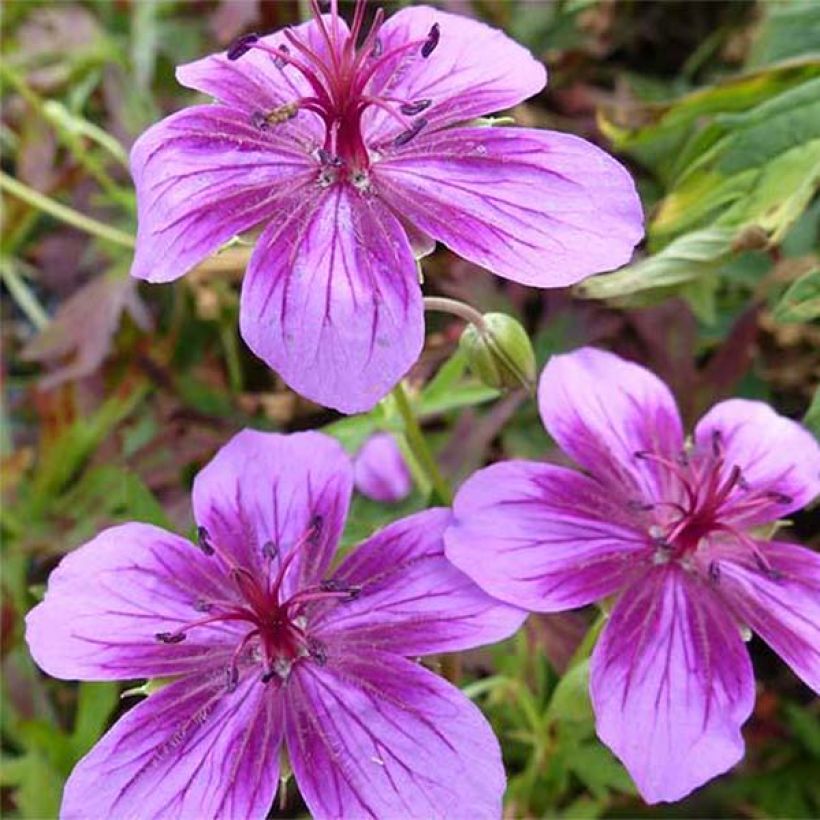

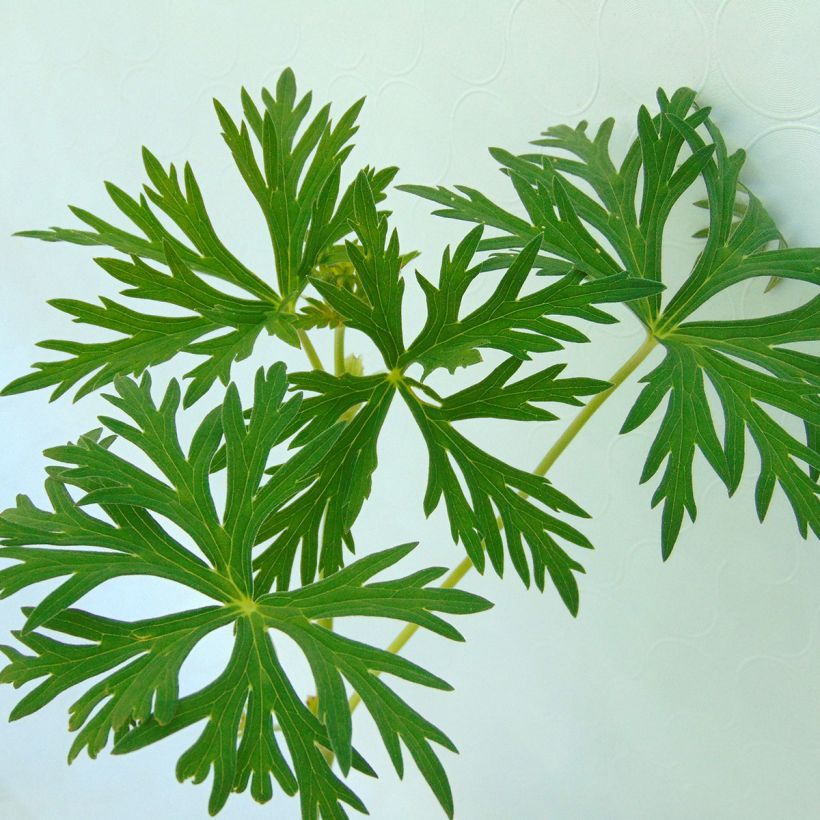

Flowering
Foliage
Plant habit
Botanical data
Geranium
soboliferum
Starman®
Geraniaceae
Cranesbill, Hardy Geranium
Cultivar or hybrid
Other Hardy Geranium - Cranesbill
Planting and care
The 'Starman' perennial Geranium prefers a partially shaded exposure and a moist to wet, well-drained soil. In heavy soil, incorporate leaf compost into the garden soil in the planting hole. It tolerates shade, although it may be slightly less floriferous, but it dreads scorching sun. It is perfectly hardy and can withstand temperatures below -20°C (-4°F).
Planting period
Intended location
Care
-
, onOrder confirmed
Reply from on Promesse de fleurs
Summer flowering perennials
Haven't found what you were looking for?
Hardiness is the lowest winter temperature a plant can endure without suffering serious damage or even dying. However, hardiness is affected by location (a sheltered area, such as a patio), protection (winter cover) and soil type (hardiness is improved by well-drained soil).

Photo Sharing Terms & Conditions
In order to encourage gardeners to interact and share their experiences, Promesse de fleurs offers various media enabling content to be uploaded onto its Site - in particular via the ‘Photo sharing’ module.
The User agrees to refrain from:
- Posting any content that is illegal, prejudicial, insulting, racist, inciteful to hatred, revisionist, contrary to public decency, that infringes on privacy or on the privacy rights of third parties, in particular the publicity rights of persons and goods, intellectual property rights, or the right to privacy.
- Submitting content on behalf of a third party;
- Impersonate the identity of a third party and/or publish any personal information about a third party;
In general, the User undertakes to refrain from any unethical behaviour.
All Content (in particular text, comments, files, images, photos, videos, creative works, etc.), which may be subject to property or intellectual property rights, image or other private rights, shall remain the property of the User, subject to the limited rights granted by the terms of the licence granted by Promesse de fleurs as stated below. Users are at liberty to publish or not to publish such Content on the Site, notably via the ‘Photo Sharing’ facility, and accept that this Content shall be made public and freely accessible, notably on the Internet.
Users further acknowledge, undertake to have ,and guarantee that they hold all necessary rights and permissions to publish such material on the Site, in particular with regard to the legislation in force pertaining to any privacy, property, intellectual property, image, or contractual rights, or rights of any other nature. By publishing such Content on the Site, Users acknowledge accepting full liability as publishers of the Content within the meaning of the law, and grant Promesse de fleurs, free of charge, an inclusive, worldwide licence for the said Content for the entire duration of its publication, including all reproduction, representation, up/downloading, displaying, performing, transmission, and storage rights.
Users also grant permission for their name to be linked to the Content and accept that this link may not always be made available.
By engaging in posting material, Users consent to their Content becoming automatically accessible on the Internet, in particular on other sites and/or blogs and/or web pages of the Promesse de fleurs site, including in particular social pages and the Promesse de fleurs catalogue.
Users may secure the removal of entrusted content free of charge by issuing a simple request via our contact form.
The flowering period indicated on our website applies to countries and regions located in USDA zone 8 (France, the United Kingdom, Ireland, the Netherlands, etc.)
It will vary according to where you live:
- In zones 9 to 10 (Italy, Spain, Greece, etc.), flowering will occur about 2 to 4 weeks earlier.
- In zones 6 to 7 (Germany, Poland, Slovenia, and lower mountainous regions), flowering will be delayed by 2 to 3 weeks.
- In zone 5 (Central Europe, Scandinavia), blooming will be delayed by 3 to 5 weeks.
In temperate climates, pruning of spring-flowering shrubs (forsythia, spireas, etc.) should be done just after flowering.
Pruning of summer-flowering shrubs (Indian Lilac, Perovskia, etc.) can be done in winter or spring.
In cold regions as well as with frost-sensitive plants, avoid pruning too early when severe frosts may still occur.
The planting period indicated on our website applies to countries and regions located in USDA zone 8 (France, United Kingdom, Ireland, Netherlands).
It will vary according to where you live:
- In Mediterranean zones (Marseille, Madrid, Milan, etc.), autumn and winter are the best planting periods.
- In continental zones (Strasbourg, Munich, Vienna, etc.), delay planting by 2 to 3 weeks in spring and bring it forward by 2 to 4 weeks in autumn.
- In mountainous regions (the Alps, Pyrenees, Carpathians, etc.), it is best to plant in late spring (May-June) or late summer (August-September).
The harvesting period indicated on our website applies to countries and regions in USDA zone 8 (France, England, Ireland, the Netherlands).
In colder areas (Scandinavia, Poland, Austria...) fruit and vegetable harvests are likely to be delayed by 3-4 weeks.
In warmer areas (Italy, Spain, Greece, etc.), harvesting will probably take place earlier, depending on weather conditions.
The sowing periods indicated on our website apply to countries and regions within USDA Zone 8 (France, UK, Ireland, Netherlands).
In colder areas (Scandinavia, Poland, Austria...), delay any outdoor sowing by 3-4 weeks, or sow under glass.
In warmer climes (Italy, Spain, Greece, etc.), bring outdoor sowing forward by a few weeks.

































